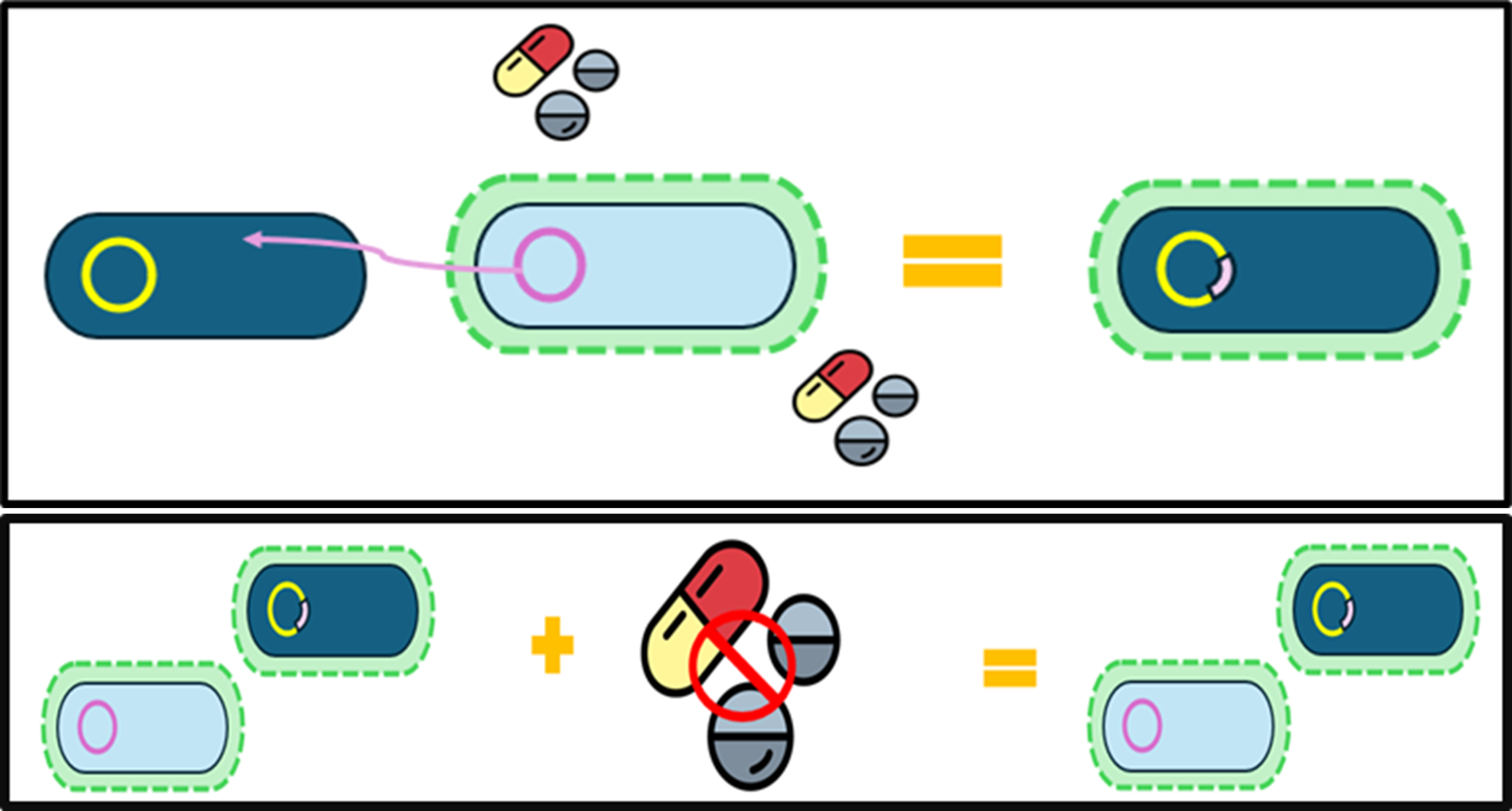
A bacterium carries its own library of instructions called a genome. This tiny blueprint tells it how to live, grow, and adapt, and it also gives scientists valuable clues for health and technology.

Inside every living organism is a library of genetic information called a genome. Like letters forming words in a book, tiny genetic letters known as nucleotides join to create genes, which act as instructions that
shape traits from eye color to flagella length. Each organism carries its own unique set of these instructions, making life wonderfully diverse.


HGT helps bacteria evolve and can affect our health. Normally, antibiotics kill bacteria, but some can share resistance genes and survive.

When bacteria share resistance genes through HGT, the trait can spread quickly, making antibiotic resistance a community-wide problem. Although this is a natural process for bacteria, its impact on humans is serious: infections once easily treated are becoming harder to cure.

Our understanding of HGT came from studying bacterial genomes, which uncovered critical challenges in modern medicine. These discoveries, made possible through genome research, showed how bacteria share resistance to antibiotics. HGT and antibiotic resistance are only two examples of the many insights gained by unraveling bacterial genomes.


Biorism is committed to addressing the global challenge of antibiotic resistance. By exploring bacterial genomes as powerful tools, we aim to uncover new insights and approaches that can lead to innovative solutions for managing and overcoming this pressing threat to human health.
References:
The article is prepared by Biorism Scientist, Ms Linah, (MSc, Medical Science).